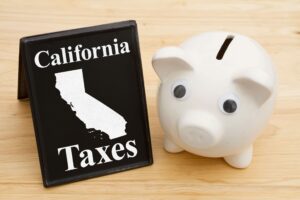
Product costs, on the other hand, are expenses that are incurred to manufacture a good and can typically be traced back to a specific product. In other words, product costs are the expenses incurred to produce something. In a manufacturing organization, an important distinction exists between product costs and period costs. In a manufacturing organization, an important difference exists between product costs and period costs. Firms account for some labor costs (for example, wages of materials handlers, custodial workers, and supervisors) as indirect labor because the expense of tracing these costs to products would be too great.

However, you’ll still have to pay the rent on the building, pay your insurance and property taxes, and pay salespeople that sell the products currently in inventory. It is a PC since it is not directly included in the manufacturing process of inventory, and it does not fit in any of the listed titles. The person creating the production cost calculation, therefore, has to decide whether these costs are already accounted for or if they must be a part of the overall calculation of production costs. The only expense category to experience a decrease was entertainment, which saw a 22.7% increase in 2021, the first year after the Covid-19 pandemic hit. The largest expense increase of 2022 belongs to cash contributions, which increased by 14.1% in 2022.
Examples of Product Costs and Period Costs
Advertising expenses can’t really be allocated to a specific manufacturing process or even a product. Advertising costs are easier to attribute to a time period for instance the advertising budget for the current year. Other general and administrative costs like office salaries can’t be allocated to products.

Because product and period costs directly impact your financial statements, you need to properly categorize and record these costs in order to ensure accurate financial statements. Managing your costs is doubly important if you own a manufacturing business, since you’ll need to manage both product and period costs. Product costs, also known as direct costs or inventoriable costs, are directly related to production output and are used to calculate the cost of goods sold. Period costs are expensed on the income statement when they are incurred. When a company spends money on an advertising campaign, it debits advertising expense and credits cash.
Average Monthly Expenses for a Family of Three
If operations are halted, the firm will not incur enabling costs; nevertheless, if operations are resumed, the firm will incur them. Some will most likely be consistent across the whole output range, while others will likely fluctuate in steps. A single-shift operation, for example, may only require one departmental supervisor, whereas a second shift operation will necessitate the hiring of a second supervisor. Mary Girsch-Bock is the expert on accounting software and payroll software for The Ascent.
The fixed cost per unit of production will fluctuate inversely with output level variations. Both product costs and period costs may be either fixed or variable in nature. Now let’s look at a hypothetical example of costs incurred by a company and see if such costs are period costs or product costs. Period costs are the costs incurred by a company to produce goods or render services that cannot be capitalized into prepaid expenses, inventory, or fixed assets.
Create New Account!
Examples of these costs are Selling cost, overhead costs, advertisement costs etc. Overall, understanding and correctly categorizing period costs is crucial for accurate financial reporting. Rent expenses, marketing https://www.bookstime.com/ expenses, and salary expenses are just a few examples of period costs in accounting. By properly recording these costs, businesses can effectively track their financial performance and make informed decisions.
Better management of period costs assists the business in identifying expenses and areas of expenses where the same or better services and results might be obtained with less expenditure to the organization. The management of period costs assists the corporation in better planning and enables the organization to use the greater earnings in expanding the business, allowing the entity to earn more profit. Every cost incurred by a business can be classified as either a period cost or a product cost.
Typically, managerial accountant want to classify expenses in categories that can improve operations. Instead, these expenses are attributed to selling and general administrative activities. The period costs could not be capitalized since they are not directly tied to the manufacture of inventory and are thus charged in the company’s profit and loss statement.
- Recording product and period costs may also save you some money come tax time, since many of these expenses are fully deductible.
- A product cost is incurred during the manufacture of a product, while a period cost is usually incurred over a period of time, irrespective of any manufacturing activity.
- Examples of period costs include selling costs and administrative costs.
- However, when it is used for manufacturing equipment, it becomes a portion of the product cost.
- Conversely, if period costs are not expensed until after revenue is recognized, the result will be lower expenses for the period, resulting in higher net income for the period.
Over the same period, the Consumer Price Index (CPI) for all urban consumers rose 8%. The Bureau of Labor Statistics produces the CPI, which is the most widely used measure of inflation in the U.S. It’s worth noting that average income before taxes only increased by 7.5% during this time period. Consumers also saw an 11% increase in expenses related to personal insurance and pensions, spending $8,756 in 2022, or $730 per month. The average household spent $9,340 on food in 2022, which comes out to $778 per month. The average American household spent $24,298 on housing in 2022, or $2,025 per month.
TranZact gives Indian SME Manufacturers the resources, analysis, and business intelligence reports they need to succeed in the market. Therefore, helping in making wise decisions and taking charge of your costs for a more profitable business is very important. period costs examples Additionally, the calculation of fixed and variable expenses may vary depending on the stage of a business’s life cycle or accounting year. The right approach will also vary depending on whether the calculation is for reporting or forecasting.
